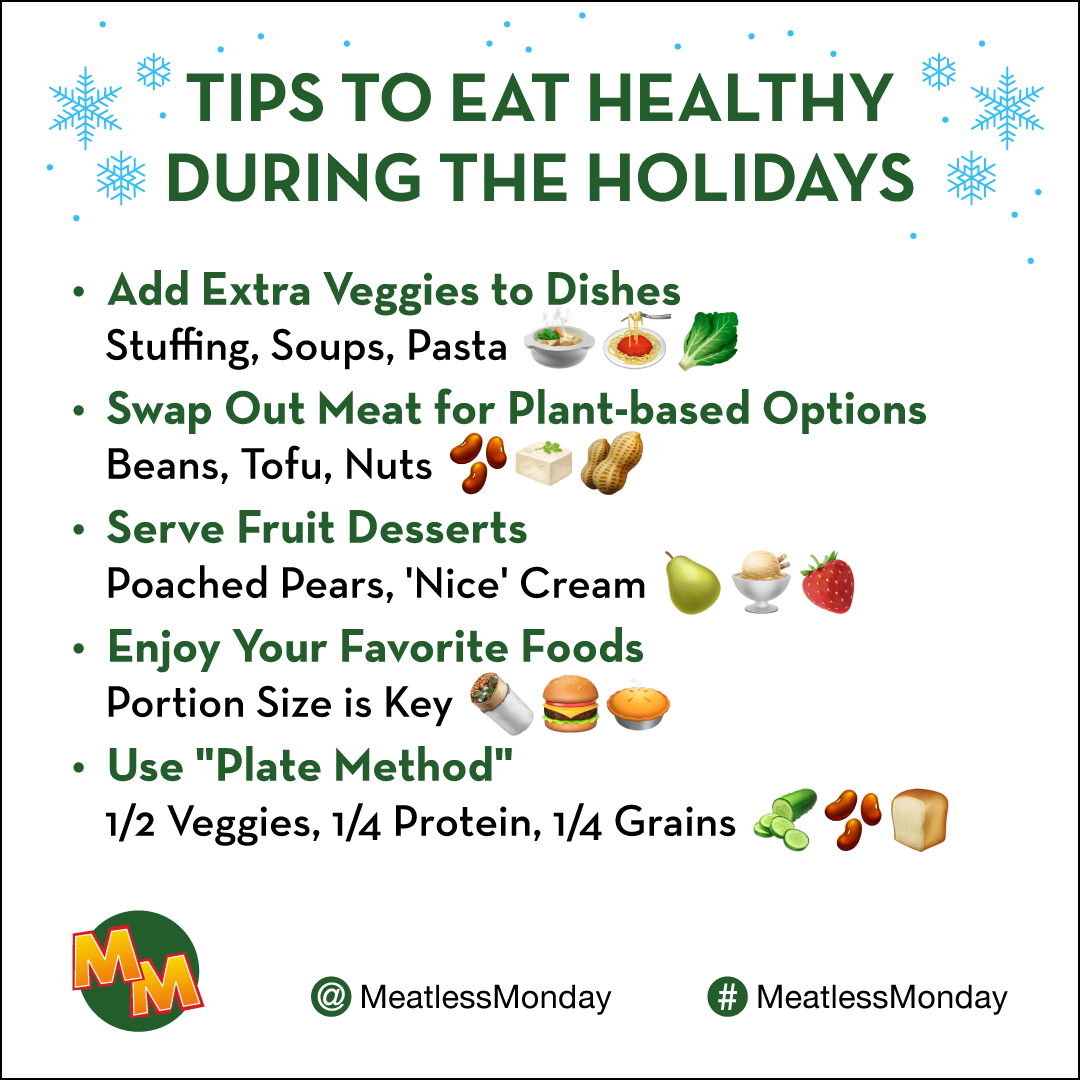Top Tips for Eating Better During the Holidays
The holiday season is a joyous time of year, but it’s also a challenging one, especially when trying to maintain healthy habits and behaviors. Typical celebrations tend to include lots of food, sweets, and drinks, and fewer opportunities for exercise and self-care.
But with some preparation and planning, you can avoid the common obstacles that may have derailed your efforts in the past.
We spoke with two health experts, Virginia-based Jill Weisenberger, MS, RDN, CDCES, CHWC, FAND, author of Prediabetes: A Complete Guide and Karen Collins, MS, RDN, CDN, FAND, nutrition advisor to the American Institute for Cancer Research, and founder of Taking Nutrition from Daunting to Doable, to create a list of practical cooking, eating, and entertaining tips to help individuals successfully navigate the holiday table with their health goals intact.
Whether you’re hosting a family affair or just a lucky party guest, these tips can be used by anyone to eat better during the holidays. And you don’t have to wait for the holidays to start; you can begin putting them into practice this today.

Add Vegetables to Everything
Whenever possible, always add more vegetables, says Weisenberger. “If a recipe calls for 3 carrots, use 5.” And don’t be afraid to modify dishes by dropping in a few extra veggies. It’s easy to add more vegetables to dishes like stuffing, soup, stew, rice, or even macaroni and cheese. You can pretty much boost the vegetable content of any starchy side dish you can think of. For people with cardiovascular disease or diabetes, sending blood sugar or blood pressure beyond safe levels can be a problem, so making healthier, more vegetable-forward recipes can help people enjoy holiday traditions without putting their health at risk.
Focus on Fruit for Low-Fat, Low-Sugar Desserts
Focusing on fruit and other low-fat ingredients is a healthy way to end the meal with a sweet, satisfying treat. Fruit parfait with layers of fruit alternating with layers of plain or lower-sugar lemon yogurt, baked pear or apple with nuts and a dollop of yogurt, and ‘nice cream’ (blended frozen bananas and other fruit) are all excellent low-fat dessert options, says Collins.
Don’t Fear Your Favorite Holiday Foods
Whether you’re a person with diabetes or just someone who is watching what they eat, you don’t need to avoid all of your favorite holiday foods. The key is portion control and thoughtful choices. “Everyone has to make decisions during the holiday season when it comes to the dinner table,” says Weisenberger, but focusing on festive, celebratory foods (ginger bread, eggnog, latkes) can help provide the most satisfaction.
Modernize the “Charcuterie” Board
“Your charcuterie board doesn’t need to be confined to sausages and other processed meats and cheeses! Make plant-based foods at least 2/3 of the board by including vegetables, fresh fruit, dried fruit, and nuts,” says Collins. If you’re hosting, keep things interesting by serving some innovative homemade dips along with your platter. For example, start with a base of plain, low-fat Greek yogurt, hummus, avocado, or pureed beans, and then dress it up with some extra seasonings, fresh herbs, spices, or condiments like a spicy mustard or chile paste.
Try to Stick to Normal Eating Patterns
It’s easy to find yourself enamored by the all the festive foods coming out of the kitchen, but you should try to stick to your usual eating pattern when possible. “The plate method of meal planning works very well for a buffet. Fill half your plate with non-starchy vegetables, one-quarter of your plate with protein-rich foods and the remaining one-quarter of your plate with starchy foods,” suggests Weisenberger.
Build Around Beans
Beans are a great source of fiber and plant-based protein, and they can easily play the role of meat in dishes like shepherd’s pie, pot pie, and stuffed peppers. Try adding them to salads, soups, and vegetable dishes, or serve them as an appetizer, like roasted chickpeas or steamed edamame. Both Collins and Weisenberger advocate for more beans, but they agree that it’s important to look at salt levels and try to purchase canned beans that are low-sodium.
Drink from Smaller Wine Glasses
Overdoing it with wine, beer, and spirits is common during the holiday season. To avoid this, Collins recommends using a smaller wine glass. “Many wine glasses today can include two or three ‘servings’ of wine when filled,” she says. “People often don’t realize that the big glasses of were designed to include lots of air space for sniffing.” It’s also wise to have a pitcher of water filled with sliced citrus fruits or fresh herbs that’s in close proximity to where the alcoholic beverages are being served.
These tips will allow you to enjoy all the delicious, celebratory foods that are so important to the holidays, without having to feel guilty or stressed. And by implementing them at the tail-end of the year, you’re already on your way to a healthier 2022. Remember, if you slip up or overdo it, you can always recommit to your healthy intentions the next day.
Click here for tips on how to make any vegetable taste delicious! When posting pictures of recipes to your social media network, tag @MeatlessMonday use #MeatlessMonday to show the plant-based community your creation.
